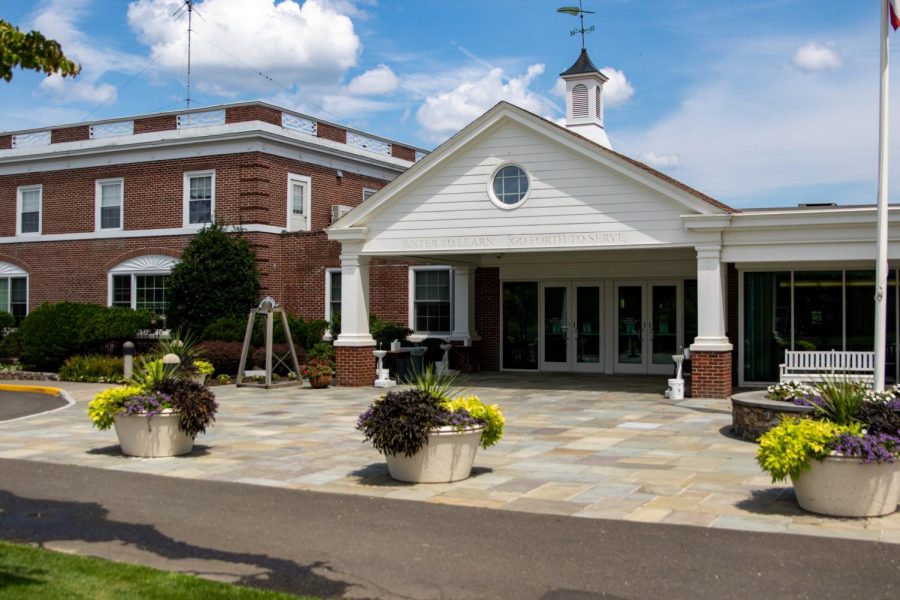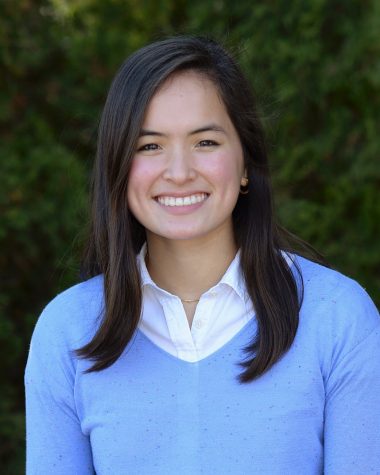‘SLSReady’: School Leadership Publishes Comprehensive Reopening Plan
St. Luke’s will return to in-person instruction with virus mitigation strategies and a new social contract in place.
August 16, 2020
On Tuesday, July 28, St. Luke’s administrators and school leaders published SLSReady, a document which explains the school’s plans for a safe return to campus in late August. In an effort to foster community and maintain academic excellence, St. Luke’s will proceed with fully in-person instruction with virus mitigation strategies in place.
Through SLSReady, school leaders sought to embody the school’s mission by being “exceptional, equitable, connected, and responsible.” Though school leaders admit that the academic year will bring its share of confusion and adjustment, they hope students will enjoy the return to campus and follow the school’s new social contract in order to keep the community safe.
SLSReady is the result of months of discussion and research, beginning with the school’s pivot to distance learning in early March. Since the outbreak of COVID-19, Head of School Mark Davis and several task forces of faculty, staff, and trustees have followed national and world data in order to navigate a possible return to school.
Faculty members observed schools across the world, most notably in Asia and the American Northwest, who have reopened with varying success. They also closely followed public health data from such scientific organizations as the Centers for Disease Control and Prevention and the American Academy of Pediatrics. Convincing research from these sources — paired with Connecticut’s low infection rates — persuaded school leaders to explore a return to campus.
“Everybody said you should do everything you can to get kids back into school,” Davis said. “For the obvious reasons of you want to make sure they’re getting a quality education and they aren’t going backwards academically and that kind of thing, but also for some of the less obvious reasons like mental health . . . And what was wonderful was that the CDC and the AAP really agreed with those things. So as they were doing their scientific and safety and health analysis, it wasn’t an either-or thing . . . it’s ‘let’s see how we can maintain health and safety and be in school.’”
Data from these respected sources were especially valuable considering the recent politicization of school reopenings.
“We tried really hard to clear our minds of that and not think ideologically or politically about it and focus on the science, specifically the epidemiology of how COVID-19 is transferred, how people shed the disease, and how people are infected by it,” Davis said. “I think as long as we can do that as a school, we can make the decisions that are going to best protect students, teachers, and staff.”
Ultimately, SLS has decided to return to completely in-person instruction with significant virus mitigation strategies in place, such as masking, social distancing, and daily symptom checks. These new policies may seem daunting, but according to Davis, implementing such comprehensive changes will actually help reduce some of the rigidity of the new protocols.
“We call it . . . a ‘belt and suspenders’ approach,” Davis said. “It’s not just one thing. It’s all of those things. And if you do all of those things, and particularly if you wear masks, you don’t have to be quite as rigid about each one of them. By belt-and-suspenders, it’s not just your belt and it’s not just your suspenders that are keeping your pants up, it’s the combination of them. So if we’re wearing masks, it’s okay for kids to not necessarily be at six feet of distance . . . that was a really important piece of information for us to understand.”
As the fall approaches, Davis will continue to monitor state and national data in hopes of easing these protocols.
“If the infection rate goes down to a level where public health officials and the state of Connecticut say you don’t have to mask anymore, I’d be influenced by that. . . . [I]f that were to happen, you bet. I’d love to have everybody come to school without masks on. Or I’d love to have people come to school and not have to worry at all about distancing. But that will depend on public health guidance and the orders of the state,” Davis said.
Though they know that these changes will certainly require adjustment, students shared that the school’s rigorous preparation helped alleviate some of the anxiety surrounding the return to campus.
“Overall, I was pretty satisfied with it,” Will Stamoulis ‘22 said. “It’s so thorough — they have plans for literally everything. . . . [T]o have St. Luke’s be so confident and thorough in their plans is comforting in a time of complete craziness. So I think the main thing I felt was just relief.”
However, students admitted that they are not sure how effectively faculty will be able to enforce the new mitigation policies.
“I’m definitely glad that the school is taking the virus seriously,” Bella Martino ‘21 said. “I wonder how they’re going to enforce everything. I wonder how strict they’re going to be. They have all of these rules set out, but I don’t know if they’re actually going to follow through with those.”
As of now, faculty have not explored disciplinary consequences for students who violate the school’s new policies. Instead, school leaders will rely on a new social contract to guide community conduct.
While students will not sign a formal contract, they will be expected to abide by the school’s policies of quarantining post-travel, daily symptom screening, masking, washing hands regularly, and physically distancing, even when not on campus.
According to Davis, the social contract reflects the school’s commitment to protecting the community and upholding our shared values.
“I would like to believe that people will really internalize, more than ever, our Honor Code,” Davis said. “Honesty, responsibility, kindness, and respect. If we internalize those things and realize that this is not about just protecting ourselves, it’s really about protecting others and keeping the school strong, I hope people will think of the Honor Code as underlying the social contract and that it will work.”
Though these new protocols will surely redefine students’ everyday school experience, St. Luke’s remains committed to delivering an exceptional education, whether in-person or online. Thus, Davis shares, one of SLSReady’s main strengths is its flexibility: the new schedule will remain constant during on-campus or distance learning, and all students will have the choice to come to campus or stay home.
Should students choose to remain at home — for any reason and at any time — they will have the ability to attend classes synchronously, a strategy called ‘concurrent learning.’ The school has equipped each classroom with cameras and microphones that will connect directly to Zoom, providing crisp audio and a vivid picture of the class in progress.
The school’s IT department (“Teach Tech”) was integral in this process, as they spent weeks researching and testing different technologies that would best suit the community’s needs. Ultimately, Teach Tech decided on the ELMO OX-1, a lightweight camera that can be attached to the wall for a full-classroom view. It can also be taken off the wall and placed on a table, which will come in handy for science labs in particular. Teach Tech also chose omni-directional Blue Snowball microphones, which create an immersive classroom sound by capturing clean audio from students in front of the microphone or teachers behind it. Finally, each classroom is now equipped with Mac minis, a compact desktop computer that can easily link a Zoom feed to the camera and microphone.
Audio/visual specialist Mr. DeVissiere played a key role in selecting this technology, and he believes the school’s investment reflects our value of connection.
“We decided to get this technology because I think as a school, we really appreciate face-to-face interaction and connecting and sharing with peers, so it was important for the school to preserve that classroom experience,” DeVissiere said.
Though this technology will help keep our community connected, it was inevitable that some cherished school activities would be limited in accordance with physical distancing protocols. Divisions will no longer meet for in-person Town Meetings, and plastic dividers now sit upon lunch tables to avoid particle transmission while students are maskless. Perhaps the most drastic change, however, was the Fairchester Athletic Association’s cancellation of regular season and postseason athletic competition.
Athletic Director Mr. West acknowledged that the cancellation would surely come as a disappointment. However, he and fellow school leaders were adamant that athletics could still unite the community, beginning with fall preseason.
“There’s no question that preseason is going to look different this time around, but we still didn’t want to give up on that opportunity to bring students to campus, to have students gather together on campus, especially as a way to integrate the new students that are becoming part of our school community. It’s such an important first point of contact in developing that comfort and those connection points. So it’s really all about community,” West said.
Preseason will begin on August 17, with rigorous physical distancing measures in place. Practices will comprise mostly individual skill work, with athletes progressing to team practice around the third week of preseason if no complications arise. If SLS’s in-person classes are still successful come mid-September, West said, the athletic department will begin “aggressively looking for opportunities . . . to start with scrimmages and interscholastic competitions.”
Though student-athletes will surely await these competition opportunities with eagerness, West encouraged them to use practices to connect with teammates and focus on individual development.
“[W]hile we are all going to miss having the same frequency of contests and opponents, it might really enrich the time that we have with one another and remove some of the distractions that allow for deeper internal, team, and peer connections, and definitely deepen the work that you have with our coaching staff,” West said.
Now that protocols are outlined and schedules are formed, all that remains is a countdown to August 24, when all students will finally return to the Hilltop. During the week-long orientation, the community will practice the new protocols and identify areas of the school that could challenge physical distancing. However, the outdoor portions of orientation will also allow community members to remove masks and welcome new students and teachers to the Hilltop.
While students and school leaders are optimistic about reuniting as a community in a few short weeks, it is clear that when we begin classes on August 31, we will be adjusting to a new normal.
“It’s going to be a different year,” Will Stamoulis ‘22 said. “I don’t think it’ll be bad, by any means, but it’ll just be different. And that’s just kind of what we have to get used to.”




